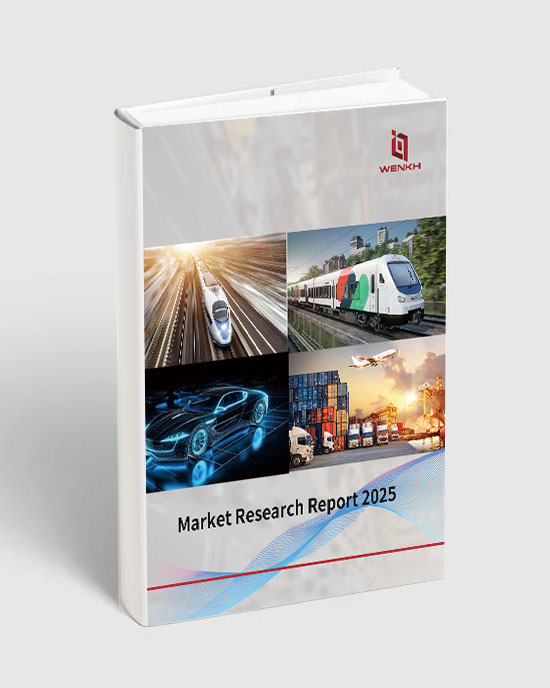
Global Automotive Pneumatic Controlled Seats Market Competitors, Segment Types and Downstream Applications Research Report 2025



Research Summary
Automotive pneumatic controlled seats are seating systems in vehicles that use air pressure to adjust various features such as lumbar support, seat height, cushion angle, and side bolsters. By inflating or deflating internal air bladders through an integrated pneumatic system, these seats offer customizable comfort and improved ergonomics for drivers and passengers. Often found in premium and commercial vehicles, they enhance ride quality by automatically adapting to body posture or road conditions, reducing fatigue on long journeys.
According to WENKH research statistics, the global Automotive Pneumatic Controlled Seats market size will reach 1,088.36 Million USD in 2025 and is projected to reach 1,305.25 Million USD by 2032, with a CAGR of 2.63% (2025-2032). Among them, the Asia-Pacific Automotive Pneumatic Controlled Seats market is undergoing rapid changes, reaching Million USD in 2025, accounting for approximately % of the global market share. It is projected to reach Million USD by 2032.
The global Automotive Pneumatic Controlled Seats market is highly competitive, with key market players including Gentherm (Alfmeier), Lear (Kongsberg), Leggett & Platt, Faurecia, Aisin Corporation, Continental, Hyundai Transys, Ficosa Corporation, Tangtring Seating Technology, etc. This report categorizes the competitive landscape of the global Automotive Pneumatic Controlled Seats market into three tiers based on annual revenue, with the top three market players holding approximately % of the total market share.
This report provides an in-depth analysis of the global Automotive Pneumatic Controlled Seats market, including market size, price trends, market status and future development prospects. It particularly focuses on the market share, product characteristics, pricing, revenue, sales volume and gross profit margin of major manufacturers in the global Automotive Pneumatic Controlled Seats industry. Additionally, this report provides an in-depth analysis of the market status and future development trends of different segments of Automotive Pneumatic Controlled Seats and their downstream application fields.
In terms of data coverage, this report includes extensive time-series data. Historical data spans from 2020 to 2024, providing a solid foundation for analyzing market development trends. The year 2025 is used as a base year to accurately assess the current market landscape, while forecast data extends from 2026 to 2032, using scientific analysis methods and models to offer forward-looking projections and insights into the market's future trajectory. This provides valuable reference information for industry participants and stakeholders.
The report covers countries including United States, China, Germany, Japan, France, South Korea, United Kingdom, India, Italy, Brazil, Mexico, Indonesia, Vietnam and South Africa. It particularly focuses on the revenue and sales volume of Automotive Pneumatic Controlled Seats in these countries, as well as the product segmentation and downstream application market size of each country. The report provides an in-depth analysis of the regional distribution and future development trends of the Automotive Pneumatic Controlled Seats market. By considering local policies, this report evaluates the market prospects of Automotive Pneumatic Controlled Seats in each country, aiming to help companies gain a comprehensive understanding of the industry characteristics and development potential in different regions, optimize regional business layout, and develop precise market strategies to achieve global development goals.
This report places significant emphasis on data quality and reliability, leveraging a wide range of data sources to ensure accuracy and validity. Primary data collection is conducted through multiple channels, including in-depth interviews with senior corporate executives, industry experts, supply chain participants, and end consumers. This helps to gain insights into corporate strategic planning, industry policies, supply chain dynamics, and user experiences. Secondary data sources cover an extensive range, including authoritative government statistics, customs databases, industry related reports, third-party paid databases, investment research reports, academic studies, corporate financial statements, real-time media updates, and information from international organizations, all of which serve as a solid foundation for data verification and analysis.
Companies Covered
Gentherm (Alfmeier)
Lear (Kongsberg)
Leggett & Platt
Faurecia
Aisin Corporation
Continental
Hyundai Transys
Ficosa Corporation
Tangtring Seating Technology
Product Segment
Pneumatic Support System
Pneumatic Massage System
Product Application
Passenger Vehicle
Commercial Vehicle
Chapter Scope
Chapter 1: Product Statistical Scope, Product Segmentation Types and Downstream Applications, Overall Market Size, Current Status and Development Prospects
Chapter 2: Global Automotive Pneumatic Controlled Seats Industry Chain Analysis
Chapter 3: Global Automotive Pneumatic Controlled Seats Industry Environment Analysis and Porter's Five Forces Analysis
Chapter 4: Analysis of the Competitive Landscape of Major Companies in the Global Automotive Pneumatic Controlled Seats Market (Market Share, Product Revenue and Sales Volume Comparison, Tier Division, Corporate Expansion and M&A Trends)
Chapter 5: Analysis of Global Major Companies (Company Profiles, Product Specifications and Features, Product Revenue, Product Sales Volume, Product Average Price and Product Gross Profit Margin)
Chapter 6: Global Automotive Pneumatic Controlled Seats Market Analysis by Countries, Product Segment and Downstream Application (Sales Volume, Revenue and Average Price)
Chapter 7: United States Automotive Pneumatic Controlled Seats Market Size, Product Segment, Downstream Application Analysis (Sales Volume, Revenue and Average Price)
Chapter 8: China Automotive Pneumatic Controlled Seats Market Size, Product Segment, Downstream Application Analysis (Sales Volume, Revenue and Average Price)
Chapter 9: Germany Automotive Pneumatic Controlled Seats Market Size, Product Segment, Downstream Application Analysis (Sales Volume, Revenue and Average Price)
Chapter 10: Japan Automotive Pneumatic Controlled Seats Market Size, Product Segment, Downstream Application Analysis (Sales Volume, Revenue and Average Price)
Chapter 11: France Automotive Pneumatic Controlled Seats Market Size, Product Segment, Downstream Application Analysis (Sales Volume, Revenue and Average Price)
Chapter 12: South Korea Automotive Pneumatic Controlled Seats Market Size, Product Segment, Downstream Application Analysis (Sales Volume, Revenue and Average Price)
Chapter 13: United Kingdom Automotive Pneumatic Controlled Seats Market Size, Product Segment, Downstream Application Analysis (Sales Volume, Revenue and Average Price)
Chapter 14: India Automotive Pneumatic Controlled Seats Market Size, Product Segment, Downstream Application Analysis (Sales Volume, Revenue and Average Price)
Chapter 15: Italy Automotive Pneumatic Controlled Seats Market Size, Product Segment, Downstream Application Analysis (Sales Volume, Revenue and Average Price)
Chapter 16: Brazil Automotive Pneumatic Controlled Seats Market Size, Product Segment, Downstream Application Analysis (Sales Volume, Revenue and Average Price)
Chapter 17: Mexico Automotive Pneumatic Controlled Seats Market Size, Product Segment, Downstream Application Analysis (Sales Volume, Revenue and Average Price)
Chapter 18: Indonesia Automotive Pneumatic Controlled Seats Market Size, Product Segment, Downstream Application Analysis (Sales Volume, Revenue and Average Price)
Chapter 19: Vietnam Automotive Pneumatic Controlled Seats Market Size, Product Segment, Downstream Application Analysis (Sales Volume, Revenue and Average Price)
Chapter 20: South Africa Automotive Pneumatic Controlled Seats Market Size, Product Segment, Downstream Application Analysis (Sales Volume, Revenue and Average Price)
Chapter 21: Research Conclusion
Chapter 22: Methodology and Data Source
Purpose and Value of the Report
Market Trend Insights: Analyze industry trends, market dynamics, and future growth potential to help companies forecast changes and develop strategic plans.
Competitive Landscape Analysis: Understand key players' revenue segmentation, strategies, market share, and business models to guide competitive decisions.
Investment Decision Support: Provide feasibility analysis through market size, growth rate, demand trends, and potential risks for informed investment decisions.
Target Customer and Demand Analysis: Examine consumer behavior, purchasing preferences, and pain points to optimize products and improve market penetration.
Policy and Regulatory Insights: Interpret relevant industry policies to ensure compliance and mitigate regulatory risks.
Business Model Optimization: Offer data-driven suggestions for enhancing business models and improving profitability.




